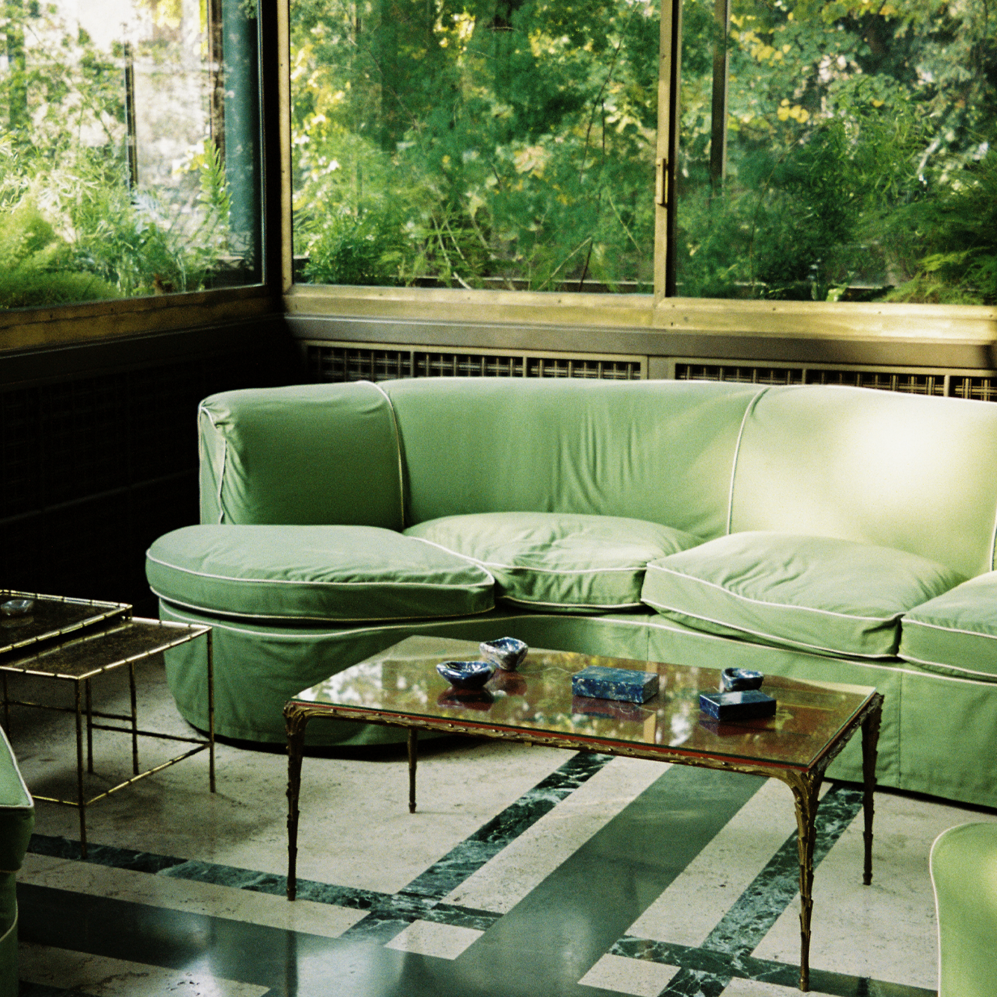
Words and images Adam ŠtěchDate 08 April 2024
Also, if you happen to be in Milan, Štěch is having his exhibition “Elements: Unique Details of 20th Century Architecture and Interior” at Dropcity from 12 to 24 April, featuring nearly 3,000 photos from his collection.
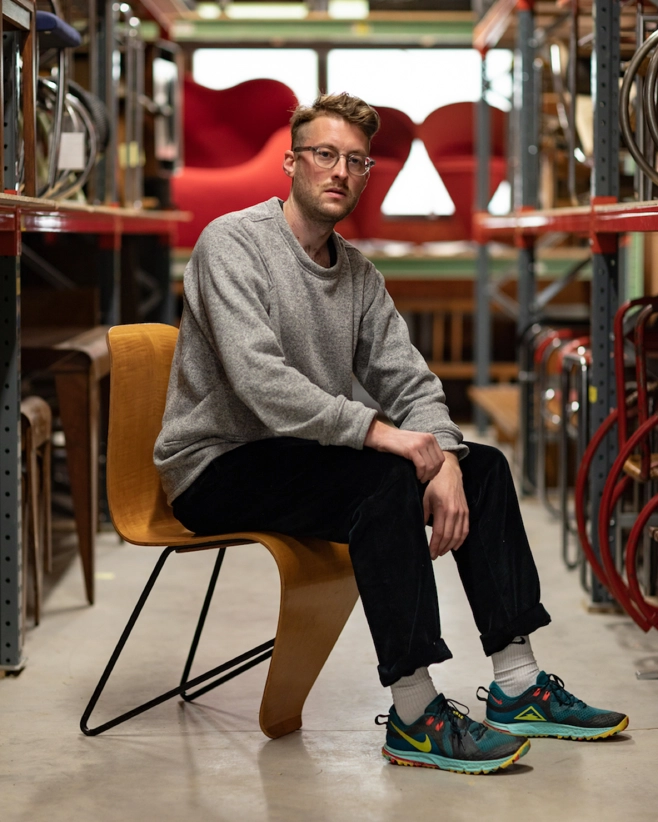
Adam Štěch
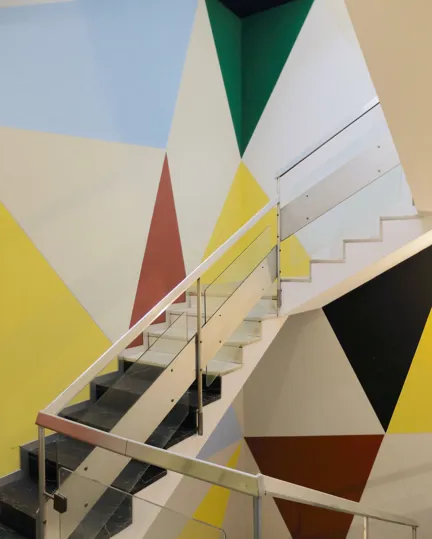
A kaleidoscopic play of colors at the stairwell of Casa Melandri

The bold entrance plays with volumes typical of Ponti's style
Viale Lunigiana 46
The architect, designer, writer, and thinker Gio Ponti was born in 1891 in Milan—the city that later became the playground for most of his design and architecture adventures. He designed this office building based on the form of a crystal, a motif recurrent in his work. He used diamond-shaped ceramic tiles to cover the entrance area of the building in a repetitive vibrant pattern. While the exterior features silver and gray, the interior showcases Ponti’s playful side, especially in the stairwell, which he transformed into a joyful blend of colors and shapes, creating an optimistic space.
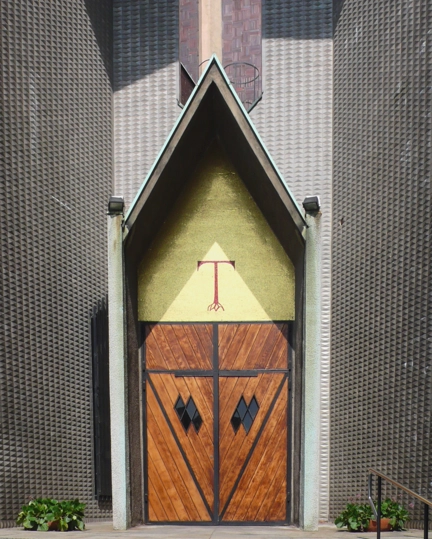
Central openings in the building reiterate Ponti's favorite motif—the diamond shape
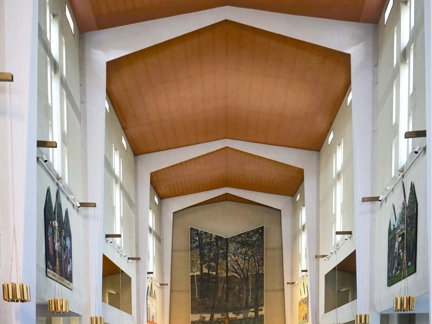
Church of San Francesco d’Assisi al Fopponino has an asymmetrical, hexagonal plan
Via Paolo Giovio 41
Gio Ponti’s obsession with diamond shapes reaches its pinnacle in his sacred architecture. The Church of San Francesco d’Assisi al Fopponino was designed as a part of a program to build 22 works in celebration of the Second Vatican Council. The façade’s sharp contours are mirrored in the diamond-relief tiles, a hallmark of Ponti’s 1960s architectural work. The large, decorated windows were designed by Christoforo De Amicis in the 1970s.
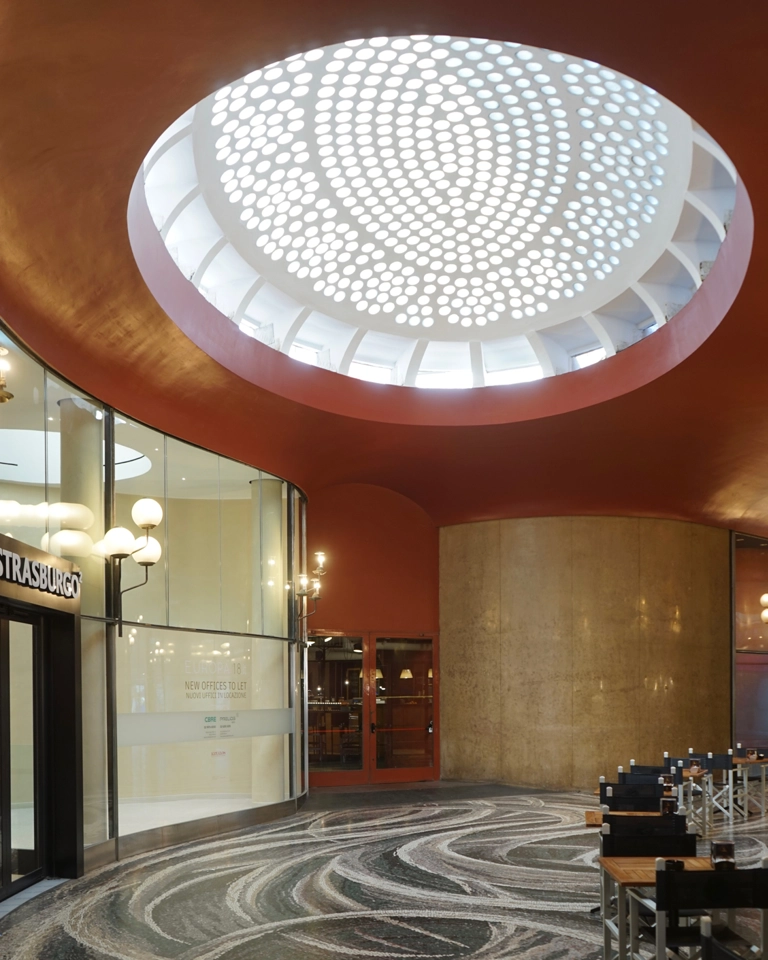
Galeria Strassburgo with the ceiling painted in brick red in Venetian stucco and an elliptical skylight

Residential building with irregularly positioned windows of varying sizes
Corso San Gottardo 19
One of the most popular architect-designers of 20th-century Italy, Luigi Caccia Dominioni helped to cement the reputation of Italian architecture and contribute to the development of Milan as a modern metropolis. He graduated from Milan Polytechnic in 1936 and founded a practice with Livio and Pier Giacomo Castiglioni. After the war, during which he served in the Italian Army and then fled to Switzerland, he established a studio in Milan, working on furniture and lighting design as well as large apartment complexes and architectural renovations. One of his most spectacular projects is the multipurpose building Galeria Strassburgo with a mosaic floor by Francesco Somaini.
Piazza Carbonari
The condominium building (above left) on Milan’s Piazza Carbonari represents one of Dominioni’s masterpieces, embodying his characteristic modest style and simple forms. The façade features irregularly positioned windows of varying sizes, lending it an abstract look. Its use of brown ceramic tiles, a signature material of the architect, was a common choice for his residential projects.

Church of San Nicolao della Flue is reminiscent of an upturned ship

Private apartment by Gardella with a copper-clad fireplace and a grided wooden ceiling
Ignazio Gardella graduated from Milan Polytechnic in 1928. After first practicing with his father, architect Arnoldo Gardella, he became highly influential in Italy’s reconstruction period. During the 1940s and 1950s, Gardella translated modernist influences into contextual architecture with a strong regional sensibility. Still completely intact today, this apartment in the center of Milan is a little-known Gardella interior gem. The architect designed it as a complex work of total architecture, with a copper-clad rectangular fireplace, a grid-structured wooden ceiling, and Murano glass chandeliers.
Via Dalmazia 11
Ignazio Gardella designed the Church of San Nicolao della Flue as an upturned ship. This eye-catching structure features a striking vaulted ceiling, the space flanked by massive organic concrete pillars that extend like the ribs of a ship’s hull. Outside, the copper-clad roof sits atop a simple rectangular volume.
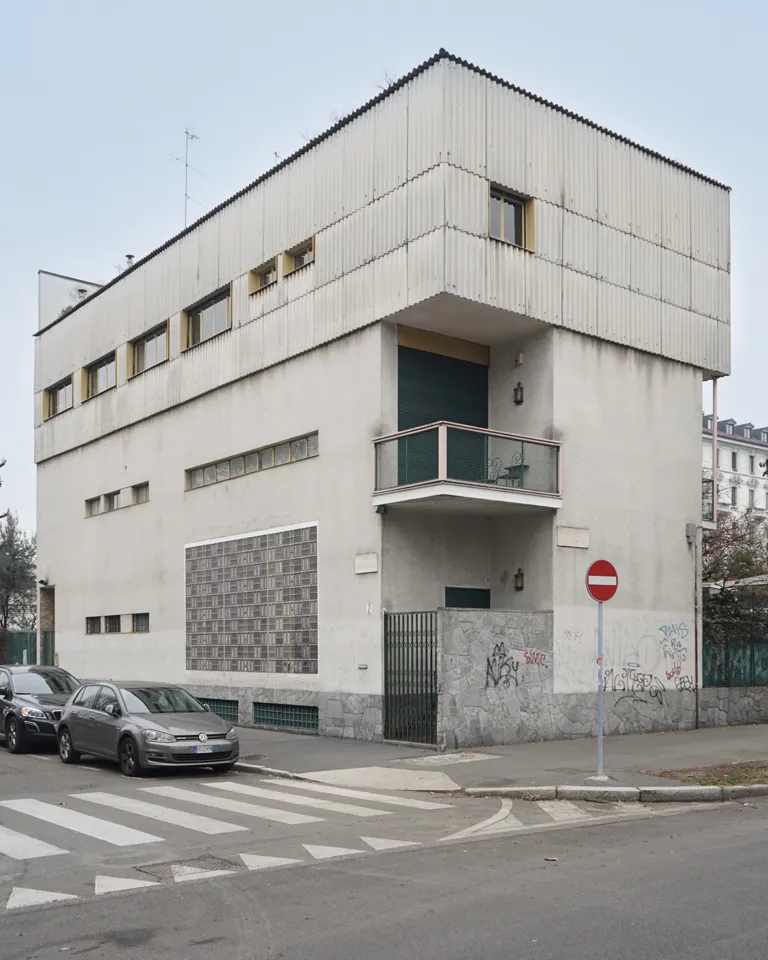
Villa Pestarini, a stunning example of rationalist architecture
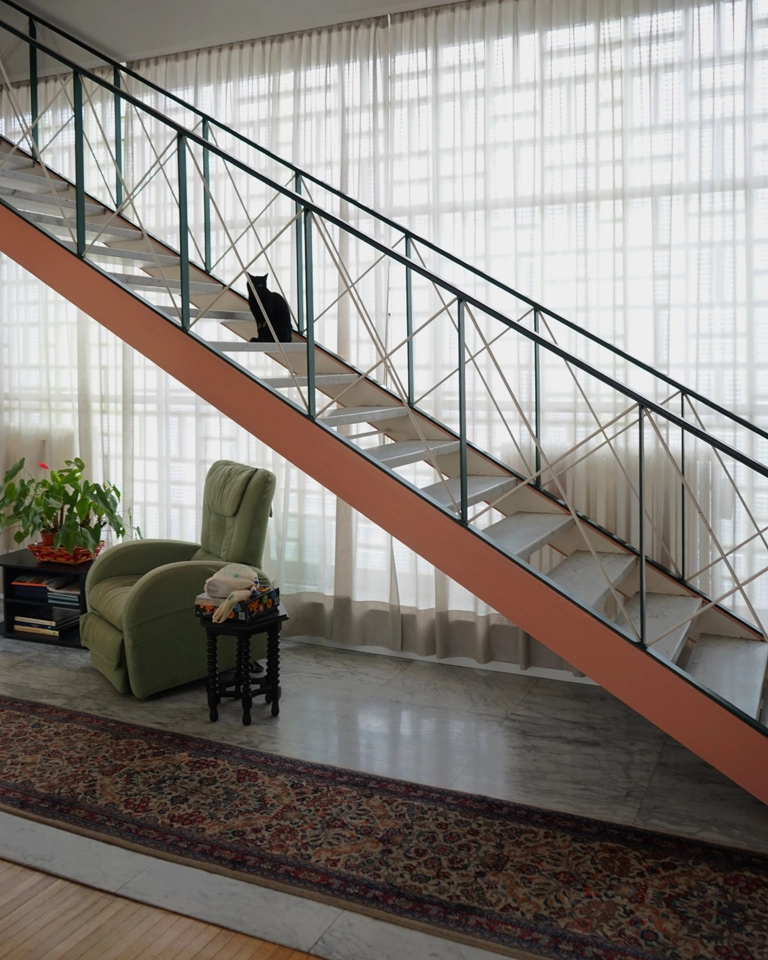
The glass bricks of the facade give the interiors a luminous, airy lightness
Via Mogadiscio 2/4
Franco Albini was just 33 when he created this example of late Italian interwar rationalism in 1938 for the Pestarini family. Initially a simple two-story white rectangular building, a third floor, also designed by Albini, was added a decade later. Albini’s interior design included unique custom-made elements such as a pink glass screen, built-in cabinets, and an impressive free-standing staircase. Today, the house is owned by Modesta Sbaragli Ferretti, who restored it after acquiring it in the 1980s.
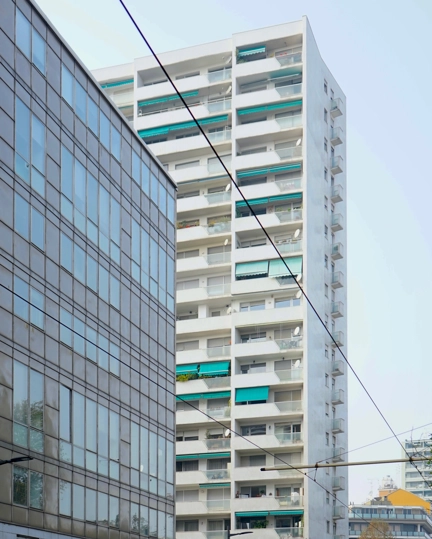
Palazzo INA a masterpiece of 20th century Italian architectural culture

The lobby features an impressive mosaic tile decoration
Corso Sempione 33
Piero Bottoni was a significant figure in Italian architecture for nearly half a century. The monumental modernist block of apartments was built as part of Bottoni’s various post-war planning and reconstruction projects. The entrance area features pink and blue mosaics in a subtle abstract motif and is dominated by elementary geometry.
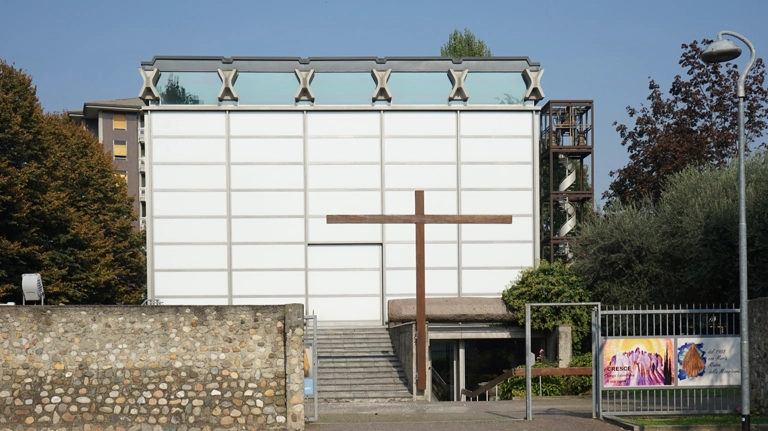
The beauty and historical importance of the Chiesa di Nostra Signora della Misericordia lie in the careful use of industrial materials and techniques
Via Conciliazione 22, Baranzate
Angelo Mangiarotti designed several memorable objects and buildings during the second half of the last century. Like many of his peers in the field of Italian industrial design and modernist architecture, he combined attention to materials with advanced technological solutions and a free, artistic sensibility. Chiesa di Nostra Signora della Misericordia in Baranzate, on the outskirts of Milan, is one of his early masterpieces. It combines pre-stressed concrete structural elements with a steel and glass facade to create a glowing, translucent cube. Restoration works were carried out in 2015 by SBG Architetti.

The flamboyant entrance is in stark contrast to the exterior
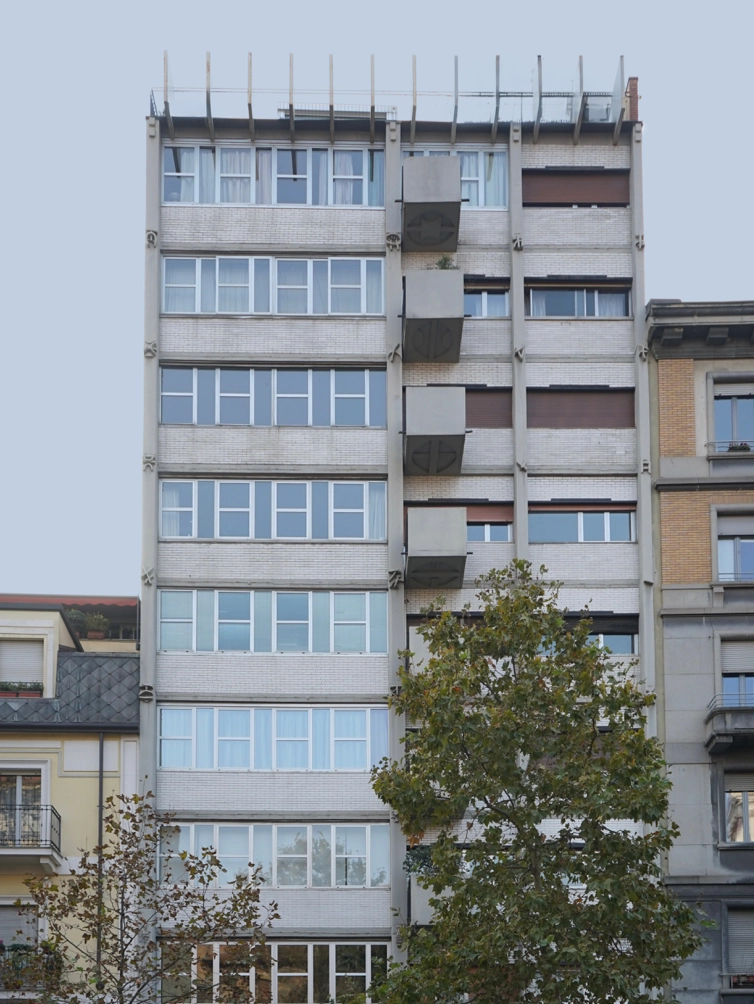
Belotti, Invernizzi, and Boraschi's narrow Brutalist apartment building
Parco Sempione
Giandomenico Belotti, Sergio Invernizzi, and Achille Boraschi created a flamboyant entranceway for their narrow Brutalist apartment building near Milan’s Parco Sempione. Sharp forms, ceramics, glass, steel, and brickwork complement one another to create an innovative cocktail of forms, set off by unique artworks by Giò and Arnaldo Pomodoro and Gianfranco Pardi.
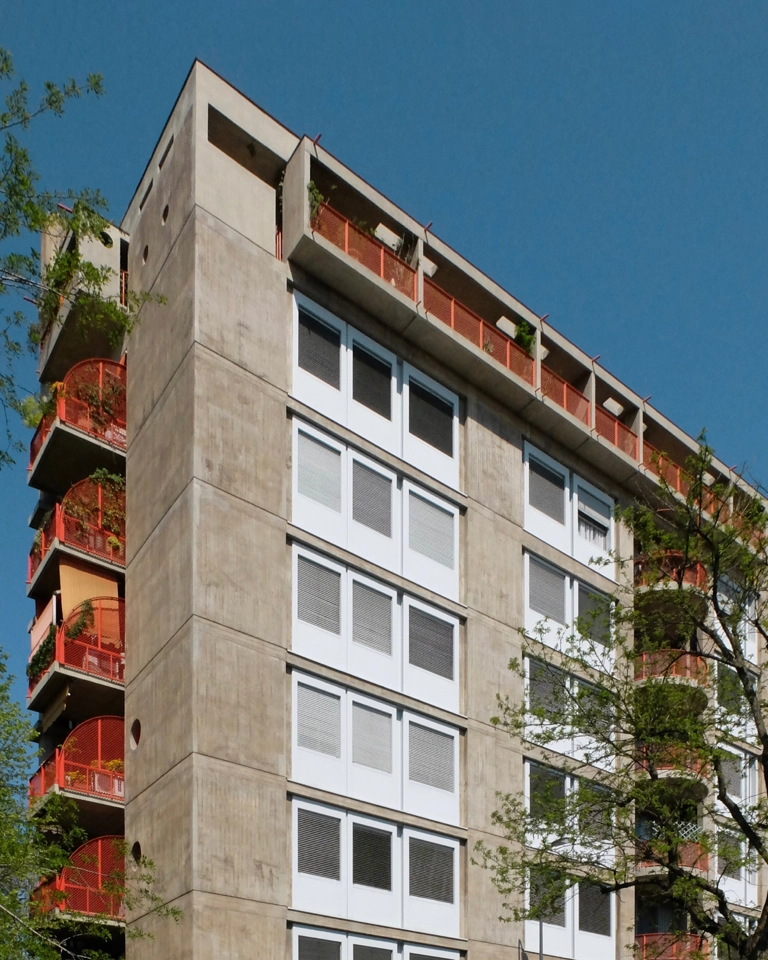
Umberto Riva's work reflects Le Corbusier's modernist influence
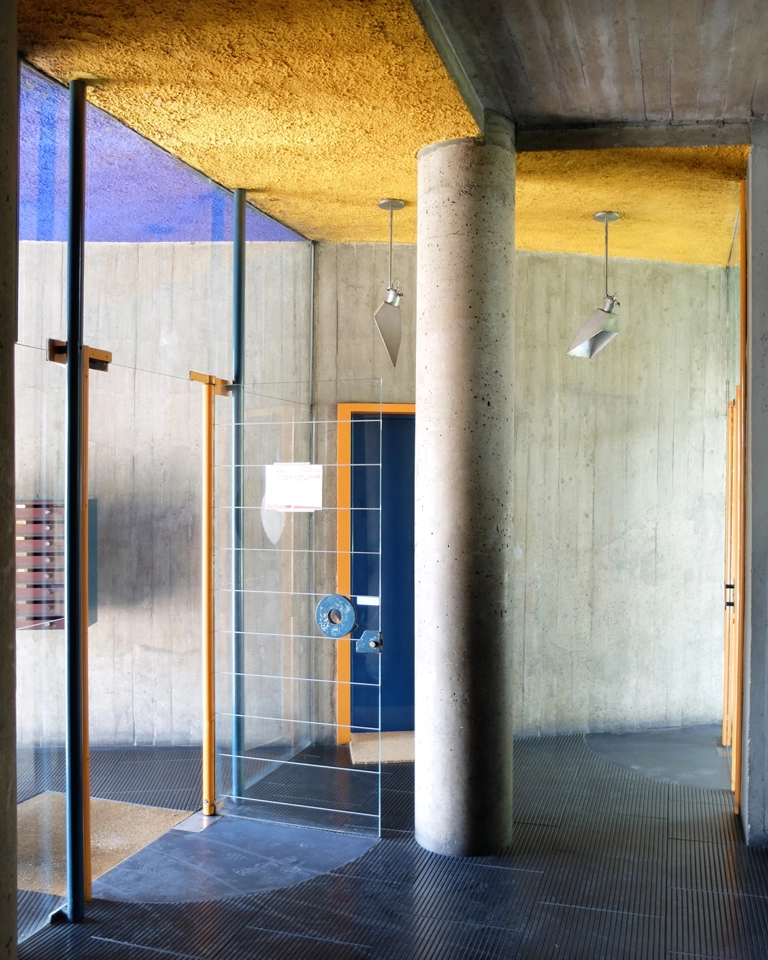
The entryway features a ceiling painted ultramarine blue that transitions to ochre
Umberto Riva was one of the most active advocates of Le Corbusier’s post-war architecture in Italy. He designed houses, apartment buildings, interiors, furniture, and lamps, such as his ingenious Veronese glass table lamps for Barovier & Toso. His Milan apartment building features a bold entrance highlighted by another of Riva’s lamp designs and houses the architect’s own apartment.
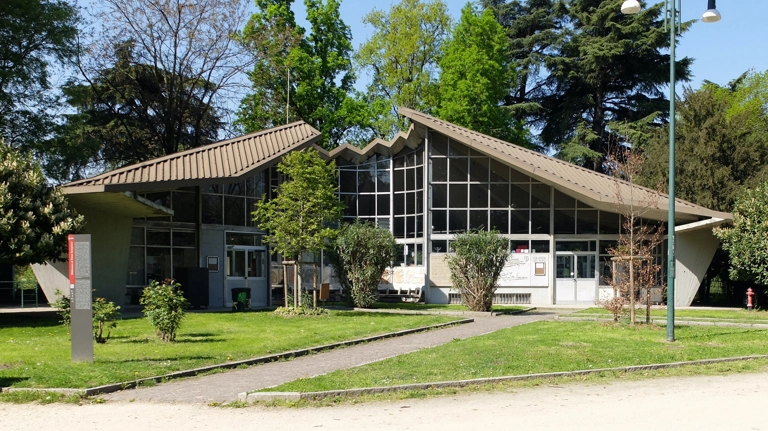
Ico Parisi and Silvio Longhi's pavilion for the Triennale di Milano
Parco Sempione
Born in Palermo, Domenico ‘Ico’ Parisi was soon drawn to the town of Como, where he witnessed the architectonic revolution of the 1930s as it unfolded. In 1947, he married Luisa Aiani, who would be his lifelong personal and creative partner. Together they launched a studio, La Ruota, which soon became a renowned creative center frequented by many of their artistic friends and contemporaries, among them Lucio Fontana, Bruno Munari, Francesco Somaini, Mario Radice, and Fausto Melotti. Ico Parisi and Silvio Longhi built the pavilion above in Parco Sempione in 1954 for the Triennale di Milano. The semicircular structure with zig-zagging concrete roof is typical of Parisi’s architecture of sharp lines and angular forms. Today a library occupies the building, which is also decorated with a glazed relief by Mario Radice.

The Cedro house owes its name to the large tree that occupies a corner of the lot

An abstract form by Antonia Tomasini placed at the end of the balustrade
C.so di Porta Nuova 16
The restrained stone-clad facade of Casa del Cedro conceals surprising, brightly colored interiors. Designed by Giulio Minoletti, the apartment building houses richly decorated communal spaces. The light-filled entrance lobby, for example, features a sky-blue wall, rich wood paneling, and an abstract painting on the ceiling created by the artist Antonia Tomasini, who also designed an impressive wooden sculpture integrated into the handrail of the staircase.
Opening image Klaudia Czarlinska
Adam Štěch profile image Julius Filip